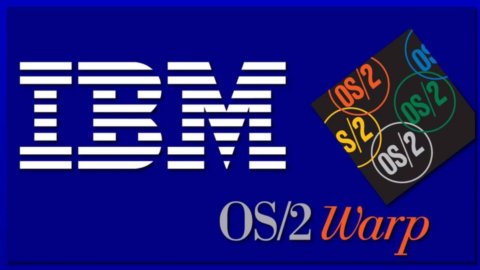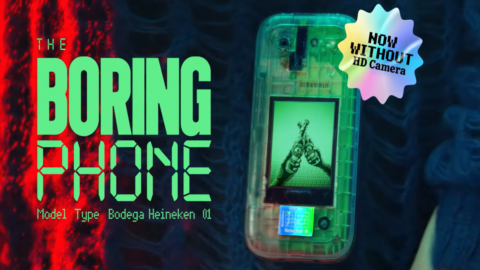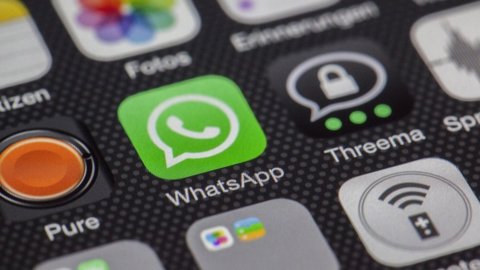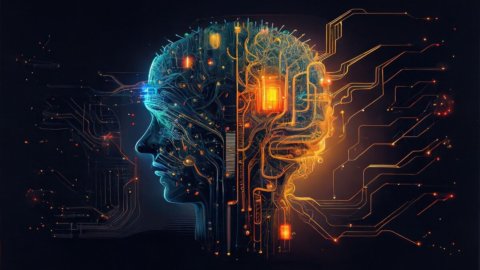Part Two (read the first): operating systems
In the first part of this post we covered the three biggest failures in computer history: 1. the Xerox Alto, 2. the NeXT, 3. the Apple Newton. However, we have seen how these sensational flops were also virtuous failures for what was born and raised on their ashes.
In this second part, which takes into consideration the positions from the fourth to the seventh, we will see some cases which, perhaps, have not been equally virtuous. Some have been interesting experiments, but badly executed, others, instead, mere vanity projects of incumbents, still others really wrong or shipwrecked due to the eccentricity of their creators. I think fourth place is deserved by a project that can be pigeonholed into the latter category.
4. Gary Kildall's CP/M

The two 5 3.0/1983 inch floppies with CP/M version XNUMX. We are in XNUMX
We are in 1980. The tyrannosaurus of the sector, IBM, decides to throw itself into the personal and home computer fray, which already promises to be a promising market. Since there is a great hurry to get out, the men from IBM set out to look for an operating system to install on their hardware. The choice, following the suggestion of Bill Gates of Microsoft, was oriented towards CP/M, an operating system for microprocessors developed, as early as 1974, by Digital Research. Digital Research is the creation of a young eccentric Californian, Gary Kildall, who could have become the Bill Gates of the years to come if he hadn't thrown away an unrepeatable opportunity because of his passion for flying.
In a hot summer of 1980, Armonk's men, as planned, show up, punctually in their blue suits, at Kildall's home in Pacific Groves on the beautiful Monterey promontory. They have the contract for the purchase or license of the CP/M operating system in their pocket. Arriving at the place they are informed, rather briskly, that Kildall is out in his private plane and would not be back before evening. His wife Dorothy refuses to sign, in her husband's absence, the confidentiality agreement placed before her by IBM's lawyers to just start talking.

Gary Kildall with his private plane. The passion for flying costs him a decisive contract with IBM which instead wins Bill Gates.
And so the negotiation ends. For IBM, it is inconceivable that any activity should be preferred to a meeting with its executives who have moved on purpose to the other side of America on a 5 and a half hour flight. IBM then made the same proposal to Bill Gates who pulled DOS, a clone of CP/M, out of the hat. The film Silicon Valley well shows the episode of the meeting between Gates and the men of IBM. It also documents how Bill cheats on DOS, which later becomes MS-DOS.
Had Kildall been at the meeting, the computer story would have been different. But Kildall's behavior shouldn't surprise too much. The Californian vernacular of the digital revolution has its roots in the counterculture of the sixties and seventies which tends to overturn the values of the American way of life. Kildall, in addition to sharing Steve Wozniak's passion for flying, is made of the same stuff as the co-founder of Apple. Both are free spirits, far from any business logic.
5. IBM OS/2

Big Blue takes the field
The choice of MS-DOS as the operating system of the IBM personal computer (launched in 1981), which instantly created an important market, turned out to be a boomerang for IBM. The vanity and presumption of IBM's lawyers and executives, in the face of the skill and cunning of Bill Gates, is very reminiscent of Phaedrus's fable of the raven and the fox. The fact is that, not having imposed on Microsoft an exclusivity clause on the supply of MS-DOS to IBM, it takes away the market from IBM and hands it over to Microsoft and Intel (which builds the IBM compatible chips). In fact, in 1985 Microsoft began licensing the MS-DOS system to all manufacturers who requested it. The resulting price war and the superior performance of clones (particularly Compaqs) kill the IBM PC. Already at the end of the eighties the IBM project foundered. At this point the Armonk colossus decides to put out its own operating system, OS/2.
The development of OS/2, begun in collaboration with Microsoft in 1984, ended in 1987 with the release of the first version called CP/DOS. Once again the cunning of Bill Gates has the better of the men of IBM. Gates immediately decides to join the IBM project, despite having the potential to kill DOS. He wants to keep Armonk's giant allied, while Microsoft is developing the authentic alternative to DOS, ie Windows which would, like the Macintosh was doing, change the paradigm of the industry. IBM is investing in something that has no future. In fact in 1990 Microsoft leaves the partnership with IBM.
In any case, OS/2 has advanced features, such as multitasking, absent in DOS, and in 1992, with version 2.0, it became the first real 32-bit operating system for PCs. But the memory and hardware configuration resources required by OS/2 are large and require a considerably higher investment than that required by DOS and Windows. Then there is another problem, perhaps even more serious. It's about the positioning of OS/2 in the huge IBM galaxy. IBM positions OS/2 as an ancillary product to its systems based on the new architecture-risk chip built with Motorola, the PowerPC. The PowerPC is released in 1991 and indeed it is a powerful architecture, but it can hardly position itself as an effective competitor of the personal computer.
If IBM had pushed OS/2 as an independent product, opened a direct sales channel of the stand-alone operating system, and set up the marketing of OS/2 as a system competitor to DOS and Windows, perhaps things would have turned out differently than they are. go. In fact, in the second half of the years, Windows 95 and Windows 98 completely annihilated OS/2 and definitively delivered the personal computer market to the Microsoft-Intel couple.
IBM then enters a long and painful restructuring. Under the guidance of Lou Gerstner, a sort of miracle takes place that leads to the painful rebirth of the historic giant of the computer industry. IBM decides to focus on the development of corporate systems, leaving the consumer segment to other operators. In 2005 IBM's PC division was bought by the Chinese company Lenovo
6.Microsoft Windows ME

It's the late 13s and Microsoft has become the new IBM of the computer industry. The market share controlled by the Microsoft-Intel duo is impressive and the dominant position of the Seattle company has already been under the attention of the antitrust for some time. On January 2000, 4, Bill Gates hands over the position of CEO to Steve Ballmer, leaving operational responsibilities within the company that he founded together with Paul Allen on April 1975, XNUMX.
In September of the same year, Windows ME (Millennium Edition) was released, which succeeded Windows 98. Windows 98 showed substantial compatibility problems with third-party hardware whose offer, in the meantime, grew dramatically. ME is widely touted as the start of a new generation of Windows 9x family operating systems. No longer includes support for real-mode MS-DOS. It presents some juicy news in the field of multimedia and entertainment.
It is also pyrotechnically celebrated as the first operating system to support Universal Plug and Play technology, in an effort to overcome the system stability problems that occur daily with Windows 95 and Windows 98, especially among the home user to whom the new operating system is targeted. Universal Plug and Play allows peripherals and components from different manufacturers to connect to the system automatically without the need to implement any installation procedure. Microsoft also distributes a list of approved and certified drivers which obviously cannot include all the offers on the market. This causes great confusion especially among domestic and less professional users.
It is also quite irritating to have to reinstall the operating system, a necessity that arises almost weekly. Many Windows ME users are newbies or beginners in the computer world and all these problems do not help the popularity of the system. Thus the perception spreads that the acronym ME stands for "Microsoft Experiment" (Microsoft Experiment), "Moron Edition" (Idiot Edition), "Mistake Edition" (Edizione Sbagliata) or "Memory Eater Edition" (Memory Eater Edition) .
Just one year after its release ME is replaced by Windows XP, of the new Windows NT OS family. XP will prove to be a very effective and stable release so as to be pre-installed on systems up to 2009.
It is now recognized that ME was one of the worst software development projects of all time, not only in the history of Microsoft which has collected several, like the one we are dealing with now. A more honorable flop than ME though.
6. Microsoft Bob

We are still at Microsoft for another little big flop in the history of system software. We are talking about Microsoft Bob and we are in 1995 with the Microsoft-Intel couple already hegemonic in the computer industry. Microsoft Bob is a very ambitious and also visionary project: a sort of bet for the state of technology of the time.
Bob is intended by Microsoft to replace the Windows application login interface. In fact, Bob's interface is not a metaphor for a desk, but a metaphor for a home environment, a living room. Thanks to this "virtual living room" a beginner can immediately start using a complex object such as a computer with zero investment in learning. Although graphical interfaces have greatly reduced the harshness of operating systems, understanding, for example, the operating logic of the Windows Program Manager and Explorer is not exactly like drinking a glass of water.
A very appreciable intent that of Microsoft, because it takes the philosophy of the desk metaphor developed at XEROS PARK and well implemented by Apple, to its ultimate consequences, that of a sort of virtual reality. For this Microsoft Bob, with due caution, can be considered to some extent the distant progenitor of the X-box. We see that there is something going on in the minds of Microsoft's designers and that, only a few years later, it will materialize in a product, which was initially opposed by Gates and Balmer. In fact, the initial architecture of the Xbox, unlike the Playstation, will be PC-like.
Bob's product manager — codenamed Utopia — is Melinda Gates, Bill's wife, who is rightly impressed by the Media Equation theory elaborated by Clifford Nass and Byron Reeves of Stanford University, two scholars of primary value on the interaction between humans and computers. An idea as good as that of a virtual reality-like interface is however made in a naive and approximate way by the Microsoft designers who work on Bob. Perhaps the team of the house founded by Bill Gates and Paul Allen, two experienced developers, lacks the obsession with design that Steve Jobs — who is not a developer — has inoculated into Apple's DNA.
Let's go back to Bob. After starting the system, the user finds a screen with a living room manned by a faithful assistant, the little dog Rover, ready to act as Cicero. Some objects present in the environment (the calendar, the pen, the clock, etc.) are shortcuts for launching the various applications which, however, open in standard mode. So the virtual environment is limited to just the splash screen, then the user is thrown into the "not-so-wonderful world" of Windows 3.1. The reception of the specialized media is disastrous. CNET magazine calls it "the worst product of the decade". The following year, Microsoft itself took it out of the way.
But like all sensational flops, it leaves a mark. Many of Bob's virtual assistants are carried over and repurposed into later Microsoft products, including Windows and Office.
Bob's flop is such, in relation to expectations, that it also leaves an important trace in Microsoft's mindset that will reveal itself 15 years later. When the Seattle giant decides to redesign Windows he chooses to do it away from any scheumorphic logic (ie mimetic of reality) with a flatter, abstract, minimalistic and Mondrian approach to the interface. Perhaps Bob's teaching is still alive in Steve Ballmer's mind. The figurative interface is finished, the abstract one begins.




